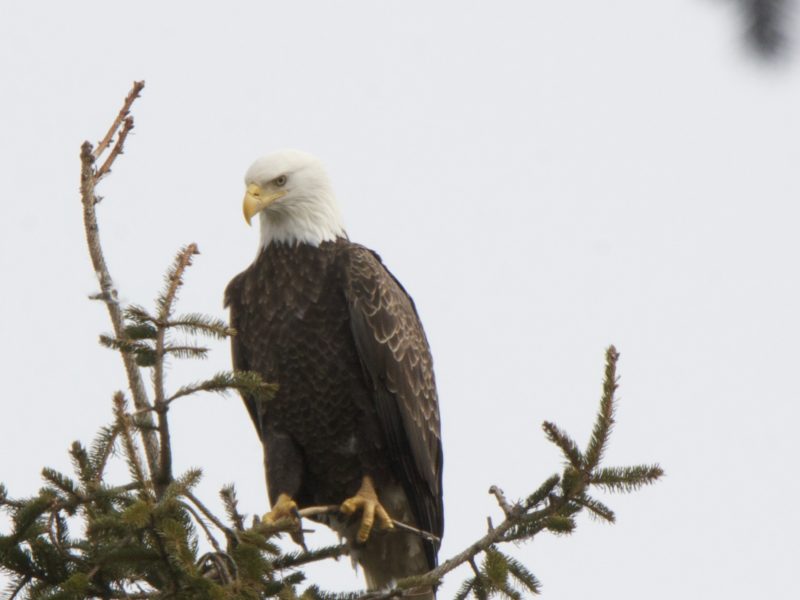
One of the few positive findings this year comes from the annual Christmas bird counts that have been going on in New York since 1901.
Long Island joined early in the last century, with the Montauk count representing Eastern Long Island as the oldest. If we include the Central Suffolk and the Quogue-to-Water Mill counts, which came on board in 1949, the Eastern Long Island end-of-the-year bird counts have been taking place annually for two-thirds of a century. Birders have been called many things, good and bad, but they carry on and thicken their ranks as time goes by.
Nowadays, December Christmas counts take place throughout the Americas and elsewhere in the world. Why birds? You tell me. Birds are colorful, can easily be spotted (especially those that come to feeders or are large and obvious), they are speciose — in other words, very common among the vertebrates. Only fish are more common, but one would catch pneumonia, or at least become very uncomfortable, when counting fish underwater in December.
While the results of this year’s counts are still being tabulated, birds came through the year better than humans; in most cases, the overall numbers and numbers of species aren’t so different from last year’s tabulations.
Several birders, me, for example, were no longer up to taking on the rigors of December’s weather and watched birds from behind glass windows. Not to worry — new birders, many of them still in high school, sprung up to take their place.
There were 115 observers, all told, for the three count circles. The Quogue-to-Water Mill count had 28 observers; Central Suffolk, 40 observers; and Montauk, 47.
As far as the Orient count was concerned, several of the regular participants stayed home. We only have a report from one area on the South Fork, part of the Orient circle: Morton Wildlife Refuge in Noyac, which has been covered annually for at least eight years now by the well-known husband-and-wife naturalist team of Eric and MaryLaura Lamont, who tallied 65 separate species.
Among the most prominent birds, prominent because of their size or rarity, were our national bird, the bald eagle: Perennial bird counter Vicki Bustamante had eight on the Gardiners Island part of the Montauk count territory; the Lamonts saw four; the Central Suffolk crew, 11; and the Quogue-to-Water Mill count, a whopping 17. In other words, a record number of bald eagles — at least 40!
As far as the number of species go, Brent Bomkamp, one of two compilers for the Montauk count, listed 125 (Vicki Bustamante had 53 on bird-rich Gardiners Island), the Quogue-to-Water Mill count had 107, while the Central Suffolk count had 123.
I remember doing that same count in 1954 with the late Dennis Puleston, the late Gil Raynor and the late Paul Stoutenburgh, three of Long Island’s greatest past naturalists. The late Roy Wilcox, a duck farmer and a fourth great Long Island naturalist, also participated in that count. We were lucky if we got as many as 50 species.
The Quogue-to-Water Mill count came up with two very rare and first-time species, clay-colored sparrow and pink-footed goose, while the Central Suffolk count garnered five snowy owls and four fish crows. This last species is becoming quite regular during the winter and very common during the summer.
The Quogue-to-Water Mill count also had fish crows — six — and another species in the crow group, five ravens. But not to be outdone by the other territories, Montauk had eight ravens, and seven snowy owls, which was runner-up to the 11 that were counted during the 2013 “invasion” year.
Montauk also came up with its seventh western kingbird record and its 13th black-head gull record. This is a European species that, like the great black-backed gull before it, has established a foothold in Canada and is still a visitor, not a breeder, here.
Also of great interest are the increasing number of egrets and herons hanging out at the edge of our wetlands and waterbodies during the winter months. The Central Suffolk count had 47 great blue herons and 12 great egrets, as well as three yellow-crowned night herons.
But, wait, what about the Quogue-to-Water Mill count? Didn’t it observe a heron or two? I’ll say it did: 32 great blue herons, 38 great egrets and one snowy egret.
These latter observations lead me to put in a plug for the enactment of the Migratory Bird Treaty Act of 1918. If it were not for the passage of this famous law, the only egret feathers left to observe would be those on the hats of famous and rich women.
Our hearts go out to Mr. Bomkamp, Eileen Schwinn, Steven Biasetti and MaryLaura and Eric Lamont, as well as to all of the other counters and contributors to this annual herculean effort. I know that MaryLaura used to compile the Orient count after Paul Stoutenburgh did it for a good many years. I know that Steve and Eileen have been planning each year’s count and compiling its bounty for many, many years now, the results from which lead to more and more efforts to protect birds and their habitats for you and me.
Thanks so much. A big hug to you all!